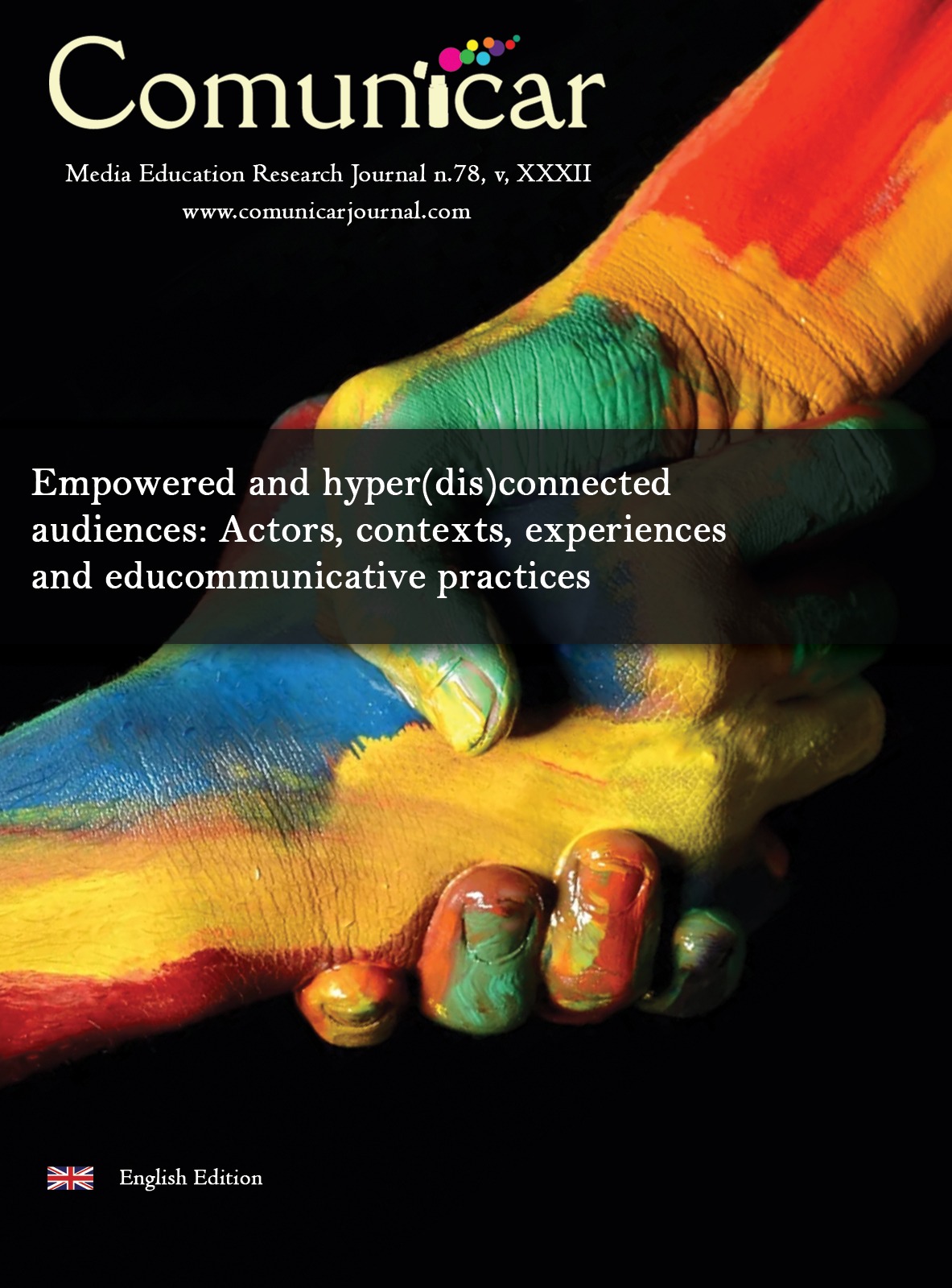Adolescents’ motivations to perpetrate hate speech and links with social norms
IF 5.1
1区 文学
Q1 COMMUNICATION
引用次数: 12
Abstract
Hate speech has become a widespread phenomenon, however, it remains largely unclear why adolescents engage in it and which factors are associated with their motivations for perpetrating hate speech. To this end, we developed the multidimensional “Motivations for Hate Speech Perpetration Scale” (MHATE) and evaluated the psychometric properties. We also explored the associations between social norms and adolescents’ motivations for hate speech perpetration. The sample consisted of 346 adolescents from Switzerland (54.6% boys; Mage=14; SD=0.96) who reported engagement in hate speech as perpetrators. The analyses revealed good psychometric properties for the MHATE, including good internal consistency. The most frequently endorsed subscale was revenge, followed by ideology, group conformity, status enhancement, exhilaration, and power. The results also showed that descriptive norms and peer pressure were related to a wide range of different motivations for perpetrating hate speech. Injunctive norms, however, were only associated with power. In conclusion, findings indicate that hate speech fulfills various functions. We argue that knowing the specific motivations that underlie hate speech could help us derive individually tailored prevention strategies (e.g., anger management, promoting an inclusive classroom climate). Furthermore, we suggest that practitioners working in the field of hate speech prevention give special attention to social norms surrounding adolescents. El discurso de odio se ha convertido en un fenómeno generalizado. Sin embargo, todavía no está claro por qué los adolescentes se involucran en el discurso de odio y qué factores están asociados con las motivaciones para perpetrarlo. Con esta finalidad, desarrollamos una medida multidimensional, la «Escala de Motivaciones para Perpetrar Discurso de Odio» (MHATE), y evaluamos sus propiedades psicométricas. Asimismo, investigamos las asociaciones entre las normas sociales y las motivaciones para participar en el discurso de odio. La muestra estuvo compuesta por 346 adolescentes suizos (54,6% chicos; Medad=14; DT=0,96) que informaron haber perpetrado discurso de odio. Los análisis revelaron buenas propiedades psicométricas de MHATE, incluyendo adecuada consistencia interna. La subescala con mayor frecuencia fue venganza, seguida de las de ideología, conformidad con el grupo, mejora del estatus, regocijo y poder. Las normas descriptivas y la presión de iguales estuvieron relacionadas con varias motivaciones para perpetrar discurso de odio. Las normas prescriptivas, sin embargo, solo se asociaron con el poder. En conclusión, los hallazgos indican que el discurso de odio cumple varias funciones. Conocer las motivaciones específicas para el discurso de odio ayuda a derivar estrategias de intervención individualmente adaptadas (ej., manejo de la ira, promover un clima escolar inclusivo). Además, sugerimos que los profesionales que trabajan en la prevención del discurso de odio presten especial atención a las normas sociales que rodean a los adolescentes.青少年仇恨言论的动机及其与社会规范的联系
然而,仇恨言论已成为一种普遍现象,目前尚不清楚青少年为什么参与其中,以及哪些因素与他们进行仇恨言论的动机有关。为此,我们制定了多维“仇恨言论犯罪动机量表”,并评估了心理特征。我们还探讨了社会规范与青少年实施仇恨言论的动机之间的联系。样本包括346名来自瑞士的青少年(54.6%的男孩;MAGE=14;SD=0.96),他们报告说作为肇事者参与了仇恨言论。分析显示,MHATE具有良好的心理特性,包括良好的内部一致性。最常被批准的是复仇,其次是意识形态、群体一致性、地位提高、呼气和权力。结果还表明,描述性规范和同龄人的压力与实施仇恨言论的各种不同动机有关。然而,禁令规范只与权力有关。总之,研究结果表明,仇恨言论具有多种功能。我们认为,了解仇恨言论背后的具体动机可以帮助我们制定个性化的预防策略(例如,愤怒管理,促进包容性的课堂气氛)。此外,我们建议在仇恨言论预防领域工作的从业者特别注意青少年周围的社会规范。仇恨言论已成为一种普遍现象。然而,目前尚不清楚青少年为什么参与仇恨言论,以及哪些因素与实施仇恨言论的动机有关。为此,我们制定了一项多层面的措施,即“仇恨言论动机量表”,并评估了其心理测量特性。此外,我们还研究了社会规范与参与仇恨言论的动机之间的联系。该样本由346名瑞士青少年(54.6%的男孩;MEDAD=14;DT=0.96)组成,他们报告说自己发表了仇恨言论。分析表明,MHate具有良好的心理测量特性,包括足够的内部一致性。得分最高的是复仇,其次是意识形态、与群体的一致性、地位的提高、喜悦和权力。描述性规则和同龄人的压力与进行仇恨言论的各种动机有关。然而,规定性规则只与权力有关。总之,研究结果表明,仇恨言论具有多种功能。了解仇恨言论的具体动机有助于制定个性化的干预策略(例如,愤怒管理,促进包容性的学校气氛)。此外,我们建议从事预防仇恨言论工作的专业人员特别注意围绕青少年的社会规范。
本文章由计算机程序翻译,如有差异,请以英文原文为准。
求助全文
约1分钟内获得全文
求助全文
来源期刊

Comunicar
Multiple-
CiteScore
10.10
自引率
5.40%
发文量
40
审稿时长
20 weeks
期刊介绍:
Comunicar specialized in educommunication: communication and education, ICT, audiences, new languages...; monographs specialized in current issues. Double format: printed and online; digitally, accessible in full text, free of charge, for the entire scientific community and researchers around the world. Coeditions printed in Spanish and English for the whole world. Published by Oxbridge Publishing House which collaborates with many international centres and universities.
 求助内容:
求助内容: 应助结果提醒方式:
应助结果提醒方式:


